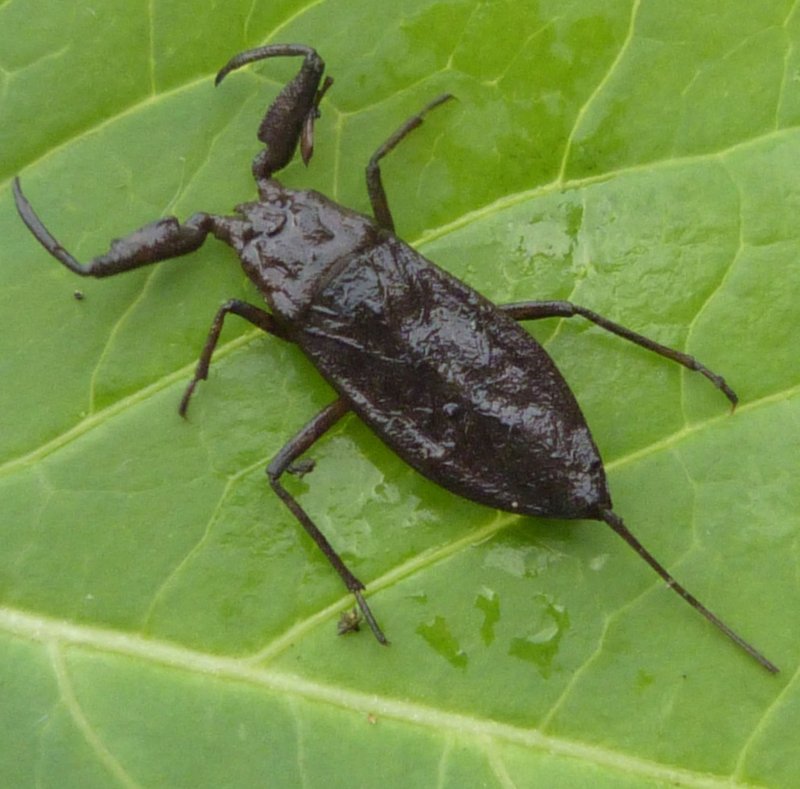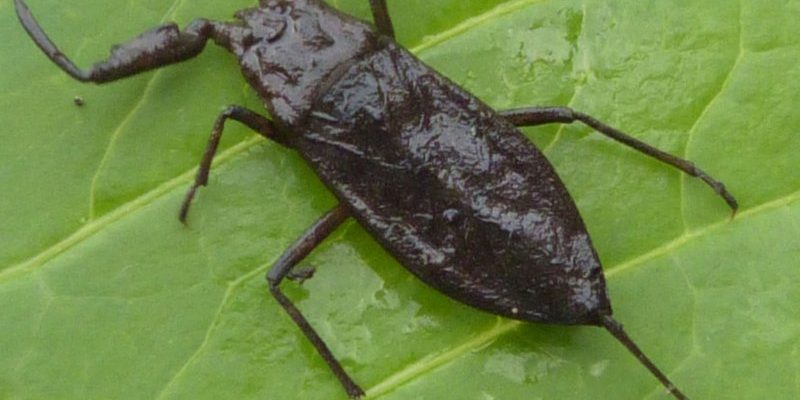
Have you ever heard of the Water Scorpion? This fascinating creature, with its unique shape and predatory habits, often flies under the radar in the world of aquatic wildlife. Imagine a tiny monster lurking beneath the water’s surface, waiting patiently for its next meal. These intriguing insects belong to the order Hemiptera and are equipped with some serious survival skills. Their adaptations make them adept at thriving in diverse environments. So, let’s dive into the world of water scorpions and discover what makes them so captivating.
Water scorpions might sound a bit intimidating, but they are more misunderstood than menacing. These insects are not actually scorpions, but rather a type of true bug that spends most of its life in water. Their unique appearance, with long, slender bodies and a pair of fascinating appendages that resemble a scorpion’s tail, makes them stand out. But don’t let their name fool you—most water scorpions are harmless to humans. Instead, they are skilled predators that feed on smaller aquatic creatures, using their specialized mouthparts to suck the life out of their prey.
So, what exactly can we learn about these aquatic dwellers? From their habitat and diet to their life cycle and behavior, there’s a lot to unpack. Whether you’re a nature enthusiast or just curious about the creepy crawlies of the water, this exploration of the water scorpion is sure to intrigue you!
Understanding Water Scorpions
Water scorpions belong to the family Nepidae, which contains about 200 species worldwide. They are largely found in freshwater habitats such as ponds, marshes, and slow-moving streams. This diverse family is well adapted to their aquatic lifestyle, featuring a long, elongated body, which helps them navigate through murky waters. With their ability to blend in seamlessly with their environment, water scorpions often go unnoticed until it’s too late for their unsuspecting prey.
When describing their appearance, it’s essential to highlight their unique morphology. The water scorpion’s body typically ranges from 1 to 4 inches in length, with some species exhibiting a darker coloration that helps them camouflage in vegetation. One defining feature is their long, slender structure, which gives them the ability to remain motionless while lying in wait for prey. Their “tail” is actually a breathing tube, enabling them to stay submerged for extended periods without surfacing for air.
Another interesting aspect of water scorpions is their breeding habits. Females lay eggs on submerged plants, allowing the nymphs to hatch and begin their predatory lives almost immediately. As these young insects develop, they undergo several molts, transforming from small nymphs to fully mature adults. This lifecycle is not only intriguing but vital for maintaining ecological balance within their habitats.
What Do Water Scorpions Eat?
Water scorpions are true carnivores. Their diet consists mainly of smaller aquatic creatures, such as fish fry, tadpoles, and other insects. With their specialized mouthparts called rostrum, they can pierce the exoskeletons of their prey and suck out the fluids. This feeding mechanism allows them to consume their catch efficiently, making them effective hunters in their watery domains.
Interestingly, water scorpions use stealth and ambush tactics to catch their food. They can remain perfectly still, blending in with their surroundings until an unsuspecting victim comes close. This method of hunting is akin to a cat lying in wait for a mouse—patience is key! Once they spot their prey, they strike quickly, using the element of surprise to their advantage.
While they may seem like ruthless predators, water scorpions play an essential role in their ecosystems. By controlling the populations of smaller organisms, they help maintain a balanced environment. In this way, they contribute to the health of their aquatic communities, illustrating the interconnectedness of all living things.
Where Do Water Scorpions Live?
You can find water scorpions in a variety of freshwater habitats, predominantly in shallow areas where vegetation is abundant. They thrive in ponds, marshes, and slow-moving streams, as these environments provide ample hiding spots and food sources. Their preference for still and warm waters makes them particularly common in warmer climates, but they can adapt to various conditions.
Adaptability is one of the remarkable traits of water scorpions. They can tolerate different levels of salinity, temperature, and turbidity. In fact, some species have even been observed in brackish waters! This adaptability allows them to occupy a wide range of niches within freshwater ecosystems, ensuring their survival even as conditions change.
While they are widespread, water scorpions are sensitive to pollution and habitat degradation. Their presence often indicates good water quality, making them important bioindicators. If you spot a water scorpion in a body of water, it’s a good sign that the ecosystem is healthy and thriving!
Life Cycle of the Water Scorpion
The life cycle of a water scorpion is fascinating and involves several stages: egg, nymph, and adult. Females typically lay eggs in the spring on submerged plants, ensuring that the nymphs have access to food once they hatch. These eggs are covered in a protective layer, which helps shield them from predators.
Once the eggs hatch, the nymphs emerge and start their lives as miniature versions of the adults. They are not born with wings but will develop them as they mature. Nymphs undergo multiple molts—sometimes up to five times—before reaching adulthood. Each molt brings them closer to becoming the remarkable predators they are known for. During this stage, they learn to hunt, refine their stealth tactics, and grow into their adult forms.
The transition from nymph to adult can take several weeks to months, depending on environmental conditions. Once they reach adulthood, water scorpions are ready to mate and continue the cycle of life. It’s fascinating to see how these creatures adapt and grow, all while playing a pivotal role in their habitats.
Interesting Facts About Water Scorpions
| Characteristic | Details |
| Size | 1 to 4 inches long |
| Habitat | Ponds, marshes, slow-moving streams |
| Diet | Small fish, tadpoles, insects |
| Life Span | Up to 1 year in optimal conditions |
| Breathing Method | Using a respiratory tube |
| Mating Period | Spring to early summer |
Are Water Scorpions Dangerous?
Many people wonder if water scorpions pose any threat to humans. Thankfully, the answer is a resounding “no.” While they may look fierce with their elongated bodies and predatory nature, they are not harmful to us. Water scorpions possess a mouthpart designed for feeding on small aquatic creatures—what they lack is the capability to bite or sting humans.
In fact, if you were to encounter a water scorpion while swimming or exploring a pond, they would likely swim away quickly, preferring to avoid confrontation. Their primary concern is survival, and they rely on their camouflage and stealth to escape predators. So, while it’s understandable to be cautious, there is no need to fear these fascinating insects. They are merely doing their job in the ecosystem!
However, it’s essential to remember that, like any wildlife, they should be treated with respect. Observing them in their natural habitat can be a wonderful experience, and understanding their role in the aquatic ecosystem can deepen our appreciation for these remarkable creatures.
Conservation Status of Water Scorpions
Water scorpions, like many aquatic species, face various environmental threats, especially due to human activities. Habitat destruction, pollution, and climate change can significantly impact their populations. Freshwater habitats are often degraded by industrial runoff, agriculture, and urban development, which can result in poor water quality and a loss of biodiversity.
Conservation efforts are crucial to protecting these unique insects and their habitats. Important steps include preserving wetlands, restoring natural watercourses, and reducing pollution. Engaging local communities in conservation initiatives can help raise awareness about the importance of these ecosystems and the creatures that inhabit them.
Additionally, monitoring water quality and conducting research into the health of aquatic ecosystems can provide valuable data on the status of water scorpions and other similar species. By understanding their populations and habitats, we can help ensure these fascinating creatures continue to thrive for generations to come.
FAQ
What is the lifespan of a water scorpion?
The lifespan of a water scorpion can vary, but under optimal conditions, they generally live up to one year. Factors like food availability, water quality, and environmental conditions can influence their lifespan significantly. Additionally, the different stages of their lifecycle can also affect their overall survival, with nymphs often facing more challenges than adults.
How do water scorpions breathe underwater?
Water scorpions have a specialized breathing tube that allows them to extract oxygen from the water. This tube is extended to the surface while the rest of their body remains submerged, enabling them to breathe without exposing themselves to predators. This adaptation is perfect for their aquatic lifestyle and enhances their hunting abilities.
Are water scorpions solitary or social insects?
Water scorpions are primarily solitary hunters. They prefer to stalk and ambush their prey alone, relying on their camouflage to blend into their surroundings. While they may encounter other water scorpions in their habitat, they generally do not form groups or colonies like some other insect species do.
Can water scorpions live in saltwater?
Some species of water scorpions can tolerate brackish waters, which are a mix of freshwater and saltwater. However, most prefer freshwater habitats. Their adaptability to different salinities does allow them to expand into various environments, but they thrive best in still, clean freshwater.
What do water scorpions use their pincers for?
Water scorpions do not have true pincers like those of crabs or true scorpions. However, their front legs are adapted for grasping and holding onto prey. This feature allows them to secure their catch while using their mouthparts to feed effectively. Their front legs also help them navigate through vegetation and maintain their stealth in the water.
Are water scorpions considered pests?
While water scorpions are predators, they are not typically regarded as pests, especially since they primarily feed on smaller aquatic creatures. They are essential to the ecosystems they inhabit, helping to maintain the balance by controlling populations of insects and fish fry. In some instances, their presence may be a sign of a healthy aquatic environment.
How do I identify a water scorpion?
Identifying a water scorpion involves looking at several key features. They have a long, elongated body that resembles a stick or twig, helping them blend into their environment. Look for their breathing tube, which extends from the rear of their body, and their unique front legs, which are adapted for catching prey. Their coloration can range from green to brown, providing excellent camouflage among plants.
Where can I find water scorpions?
You can find water scorpions in various freshwater habitats, including ponds, lakes, marshes, and slow-moving streams. They prefer areas with plenty of vegetation, as it provides both hiding spots and hunting grounds. If you’re exploring a body of water, keep an eye out for these fascinating creatures lurking in the shadows!
What temperature do water scorpions prefer?
Water scorpions generally thrive in warmer waters, typically between 70°F and 85°F (21°C to 29°C). However, they can tolerate a range of temperatures as long as their habitat offers adequate shelter and food sources. Extreme temperature fluctuations can be detrimental to their survival, especially during the nymph stage.
What threats do water scorpions face?
Water scorpions face various threats, primarily due to human impact on their habitats. Pollution, habitat destruction, and climate change significantly affect their populations. Protecting wetland ecosystems and promoting sustainable practices can help mitigate these threats and ensure the survival of water scorpions and other aquatic species.
Can water scorpions swim?
Yes, water scorpions can swim, but they primarily use a combination of crawling and swimming to navigate their environments. When they need to escape predators or move quickly, they can use their legs for propulsion, darting through the water. However, they prefer to remain still and camouflaged to catch their prey.

